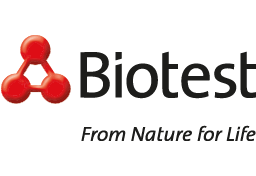The Plasma Protein Therapeutics Association PPTA is of the opinion that the coronavirus is not a problem for the safety of plasma protein therapies.
2019 Novel Coronavirus (2019-nCoV) and Plasma Protein Therapies
Recent international reports have highlighted the emergence of a new coronavirus in Wuhan, Hubei Province, China.1 The 2019 Novel Coronavirus (2019-nCoV) was first identified by Chinese authorities in December 2019 and since then has been associated with pneumonia in over 2000 persons in China and more than 50 deaths.1, 2
In addition, there has been a growing number of cases identified outside of Hubei Province and internationally.1, 2, 3 On January 21, 2020 the U.S. Centers for Disease Control and Prevention (CDC) confirmed the first case of a person being infected with 2019-nCoV in the U.S.4 More cases have since then been confirmed internationally.1, 2, 3
PPTA considers that the 2019-nCoV is not a concern for the safety of plasma protein therapies manufactured by PPTA member companies based on the following information:
To date, the majority of cases detected has been in the Hubei province in China. Individuals diagnosed with the virus in other countries acquired the disease through travel to Wuhan City, Hubei Province. Based on the current epidemiological evidence, it is unlikely that the virus is present in U.S. and European populations. Moreover, donor screening procedures are in place to prevent donations from individuals showing disease symptoms typical of a coronavirus infection (raised temperature/ fever, cough, difficulty breathing) from donating plasma.
The 2019-nCoV is a large sized virus (approximately 120 nm in diameter).5, 6 The relatively large size and lipid envelope makes it highly susceptible to steps with virus inactivation and removal capacity used during the manufacturing processes, such as solvent-detergent (S/D),7 low pH incubation, caprylate, pasteurization8 or dry-heat treatments,9 nanofiltration or fractionation processes and others.10 The effectiveness of these processes has been demonstrated on other lipid-enveloped model viruses which are quite similar to 2019-nCoV, e.g. human coronavirus 229E and OC43, SARS-CoV, and porcine coronavirus TGEV.8, 11, 12
Based on these data, PPTA is convinced that existing manufacturing methods provide significant safety margins against the 2019-nCoV.
Public health bodies in the US (CDC) and in Europe (ECDC), as well as the WHO and Chinese authorities, are continuously monitoring the situation and have put in place proactive measures to monitor 2019-nCoV infection in Europe and in the U.S, as well as internationally, including issuing travel guidance for Wuhan City, Hubei Province, China1, 13, 14, 15 testing16, 17 and reporting guidance for 2019-nCoV, and adding entry health screening at major U.S.1 and international airports18 for passengers coming from Wuhan City.
Based on strict screening procedures for plasma donors and the established processes of virus inactivation and removal during manufacturing of plasma-derived products, PPTA concludes that the 2019-nCoV is not a concern for the safety margins of plasma protein therapies manufactured by PPTA member companies.
Background:
The 2019 Novel Coronavirus (2019-nCoV) belongs to the family of Coronaviridae, which are known to infect animals and humans, causing respiratory and gastrointestinal illness. Seven different coronaviruses are known to infect humans, causing mild to moderate illness. In rare cases, animal coronaviruses can evolve and infect humans. This has been observed in the past with Severe Acute Respiratory Syndrome (SARS) and Middle East Respiratory Syndrome (MERS), both known to cause severe illness.5, 6 There is no published data documenting transmission of respiratory coronaviruses by blood transfusion.5, 6
It appears that the 2019-nCoV can be spread through human-human contact via respiratory droplets. More research is needed, however, to fully understand the mode of transmission, clinical course of disease and epidemiology, and whether particular population groups are at a higher risk of illness.5, 6
References:
- S CDC: 2019 Novel Coronavirus (2019-nCoV), Wuhan, China. https://www.cdc.gov/coronavirus/2019-nCoV/summary.html (updated January 26, 2020) [Accessed January 27, 2020
- South China Morning Post: https://www.scmp.com/news/china/society/article/3047753/chinese-premier-li-keqiang-arrives-wuhan-lead-coronavirus-fight (Accessed January 27, 2020)
- European Centre for Disease Control (ECDC): Novel Coronavirus in China: https://www.ecdc.europa.eu/en/novel-coronavirus-china (Updated January 27, 2020) [Accessed January 27, 2020]
- S CDC: First Travel-related Case of 2019 Novel Coronavirus Detected in United States. https://www.cdc.gov/media/releases/2020/p0121-novel-coronavirus-travel-case.html [Accessed January 22, 2020]
- S CDC: Coronaviruses: https://www.cdc.gov/coronavirus/types.html [Accessed January 27, 2020]
- Encyclopaedia Britannica: Coronavirus https://www.britannica.com/science/coronavirus-virus-group [Accessed January 27, 2020]
- Rabenau HF, Biesert L, Schmidt T, et al. SARScoronavirus (SARS-CoV) and the safety of a solvent/ detergent (S/D) treated immunoglobulin preparation. Biologicals 2005;33:95-9.
- Gröner A, Broumis C, Fang R et al. Effective inactivation of a wide range of viruses by pasteurization. Transfusion. 2017 May;57(5):1184-1191 [Accessed January 27, 2020]
- Yunoki M, Urayama T, Yamamoto I, et al. Heat sensitivity of a SARS-associated coronavirus introduced into plasma products. Vox Sang 2004;87:302-3
- Keil SD, Bowen R, Marschner S: Inactivation of Middle East respiratory syndrome coronavirus (MERS-CoV) in plasma products using a riboflavin-based and ultraviolet light-based photochemical treatment. Transfusion. 2016 Dec;56(12):2948-2952.
- Lamarre A, Talbot PJ. Effect of pH and temperature on the infectivity of human coronavirus 229E. Canadian Journal of Microbiology. 1989;35(10):972-4. 51.
- Bucknall RA, King LM, Kapikian AZ, Chanock RM. Studies with human coronaviruses II. Some properties of strains 229E and OC43. Proceedings of the Society for Experimental Biology and Medicine. 1972;139(3):722-7.
- ECDC Risk assessment: outbreak of acute respiratory syndrome associated with a novel coronavirus, China; First cases imported in the EU/EEA; second update. Updated January 26, 2020) https://www.ecdc.europa.eu/en/publications-data/risk-assessment-outbreak-acute-respiratory-syndrome-associated-novel-0 [Accessed January 27, 2020]
- U.S. CDC: Travel Health Notices (updated January 26, 2020) https://wwwnc.cdc.gov/travel/destinations/traveler/none/china#travel-notices [Accessed January 27, 2020]
- WHO: Novel Coronavirus (2019-nCoV) https://www.who.int/westernpacific/emergencies/novel-coronavirus [Accessed January 27, 2019)
- WHO: Laboratory testing for 2019 novel coronavirus (2019-nCoV) in suspected human cases. https://www.who.int/health-topics/coronavirus/laboratory-diagnostics-for-novel-coronavirus [Accessed January 22, 2020]
- ECDC: Laboratory testing of suspect cases of 2019 nCoV using RT-PCR. https://www.ecdc.europa.eu/en/publications-data/laboratory-testing-suspect-cases-2019-ncov-using-rt-pcr (Updated January 16, 2020) [Accessed January 22, 2020]
- https://edition.cnn.com/travel/article/coronavirus-airport-screenings/index.html (Updated January 22, 2020) [Accessed January 24, 2020]
Created on 29 January 2020.
Link PPTA: PPTA’s statement regarding coronavirus and the safety of plasma protein therapies


